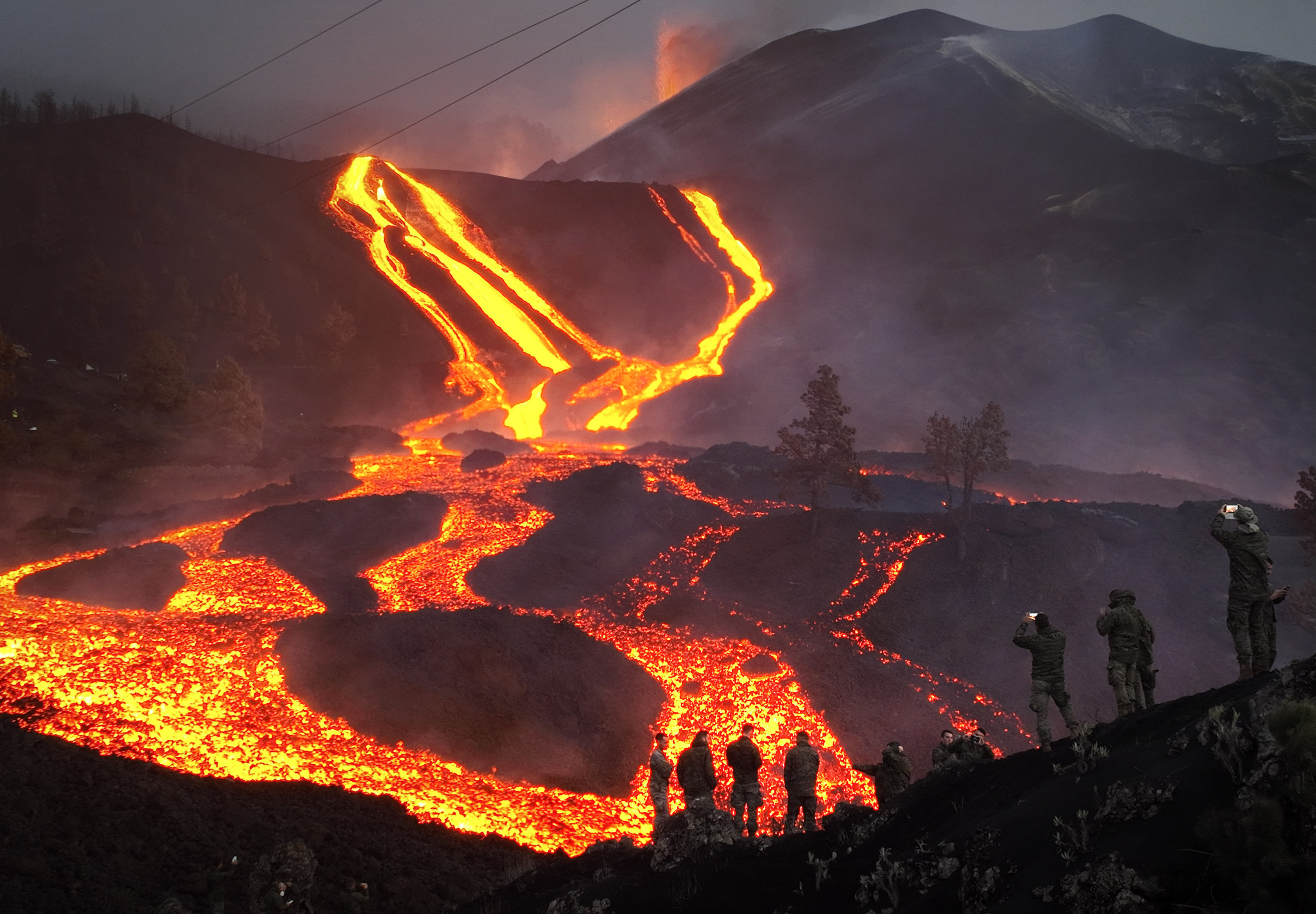La Palma Volcano 2024: The Latest Developments And Impacts
The La Palma volcano 2024 eruption has once again captured global attention, as this active volcano continues to reshape the landscape of the Canary Islands. This event is not just a geological phenomenon but also a reminder of nature's raw power and unpredictability. The eruption has significant implications for the local community, the environment, and global climate patterns.
The eruption of La Palma volcano in 2024 follows a series of seismic activities that have been closely monitored by scientists. As the world watches, the ongoing eruption presents an opportunity to study volcanic behavior and its long-term effects on the region. Understanding these processes is crucial for mitigating risks and preparing for future events.
This article delves into the details of the La Palma volcano 2024 eruption, exploring its causes, impacts, and the measures being taken to ensure public safety. Whether you're a geology enthusiast or simply curious about natural disasters, this article provides comprehensive insights into one of the most significant geological events of our time.
Read also:Puppy Songs Cheese Tax Lyrics A Comprehensive Guide To The Catchy Melody
Table of Contents
- Introduction to La Palma Volcano
- Geological Background
- The 2024 Eruption
- Impacts on the Environment
- Human Impact
- Scientific Studies and Observations
- Future Predictions
- Precautionary Measures
- Global Significance
- Conclusion
Introduction to La Palma Volcano
La Palma, one of the Canary Islands, is renowned for its stunning landscapes and active geological history. The Cumbre Vieja volcanic ridge, located on the island, is the site of the La Palma volcano 2024 eruption. This ridge has been the focus of intense scientific study due to its potential for large-scale eruptions.
The volcanic activity on La Palma is not a new phenomenon. Historical records show that eruptions have occurred periodically, with the most recent significant event prior to 2024 taking place in 1971. The 2024 eruption, however, has been particularly noteworthy due to its intensity and the extensive damage caused.
Geological Background
Understanding the Formation of La Palma
La Palma's geological history is a fascinating tale of tectonic movements and volcanic activity. The island was formed through a series of volcanic eruptions over millions of years. The Cumbre Vieja ridge, which runs through the southern part of the island, is the youngest and most active volcanic structure on La Palma.
Scientists believe that the ridge is still in the process of forming, with periodic eruptions contributing to its growth. This ongoing geological activity makes La Palma a hotspot for volcanic research.
Key Features of the Cumbre Vieja Ridge
- Active volcanic ridge with multiple vents
- Rich in basaltic magma, leading to explosive eruptions
- Monitored extensively for seismic activity
The 2024 Eruption
The La Palma volcano 2024 eruption began in September, following a period of increased seismic activity. This eruption was characterized by powerful explosions, lava flows, and ash clouds that blanketed large areas of the island. The event drew international attention due to its scale and the potential risks it posed.
Local authorities were quick to respond, evacuating thousands of residents from the affected areas. The eruption also disrupted air travel, as ash clouds forced the closure of nearby airports. Despite these challenges, the response efforts were praised for their efficiency and coordination.
Read also:Jennifer Earles The Rising Star In The Entertainment Industry
Impacts on the Environment
The environmental consequences of the La Palma volcano 2024 eruption are significant. Lava flows have destroyed vast tracts of land, altering the island's landscape permanently. The ashfall has also affected local ecosystems, impacting vegetation and wildlife.
Additionally, the release of volcanic gases such as sulfur dioxide has raised concerns about air quality. Scientists are closely monitoring these emissions to assess their potential impact on climate patterns and global weather systems.
Human Impact
The human cost of the La Palma volcano 2024 eruption cannot be overstated. Thousands of residents have been displaced, losing their homes and livelihoods. The economic impact is also severe, with the island's tourism industry suffering significant losses.
Efforts are underway to provide support to those affected, with international aid organizations and governments contributing resources. The resilience of the local community has been a source of inspiration, as they work together to rebuild and recover from the devastation.
Scientific Studies and Observations
Monitoring Techniques
Modern technology has played a crucial role in monitoring the La Palma volcano 2024 eruption. Scientists use a combination of satellite imagery, seismic sensors, and drones to track volcanic activity in real-time. This data is vital for predicting future eruptions and ensuring public safety.
Key Findings
- Increased seismic activity preceding the eruption
- Complex patterns of magma movement beneath the surface
- Persistent gas emissions indicating ongoing volcanic activity
Future Predictions
While predicting volcanic eruptions with absolute certainty remains challenging, scientists are making strides in understanding the underlying processes. The data collected during the La Palma volcano 2024 eruption will contribute to more accurate forecasting models in the future.
Long-term predictions suggest that the Cumbre Vieja ridge will continue to be an active volcanic area. Residents and authorities must remain vigilant, implementing effective early warning systems and evacuation plans to minimize risks.
Precautionary Measures
In response to the La Palma volcano 2024 eruption, authorities have implemented several precautionary measures to protect the local population. These include:
- Establishing emergency response teams
- Conducting regular drills and simulations
- Providing educational resources on volcanic hazards
Public awareness campaigns have also been launched to ensure that residents are informed and prepared for any future events.
Global Significance
The La Palma volcano 2024 eruption has implications far beyond the Canary Islands. As one of the most studied volcanic events in recent history, it provides valuable insights into volcanic processes and their global impact. The data gathered during this eruption will contribute to a better understanding of volcanic activity worldwide.
Furthermore, the event highlights the importance of international cooperation in disaster response and mitigation. Lessons learned from the La Palma experience can be applied to other regions prone to volcanic activity, enhancing global preparedness.
Conclusion
The La Palma volcano 2024 eruption serves as a powerful reminder of the dynamic nature of our planet. While the event has caused significant disruption and destruction, it also offers valuable opportunities for scientific research and learning. By studying this eruption, we can improve our understanding of volcanic processes and enhance our ability to mitigate their impacts.
We encourage readers to share this article and engage in discussions about volcanic activity and disaster preparedness. Together, we can work towards a safer and more informed future. For more insights into geological phenomena, explore our other articles on natural disasters and earth sciences.


